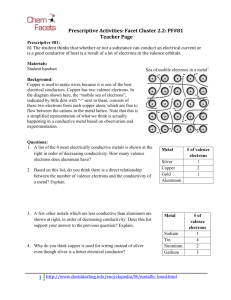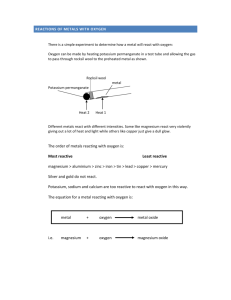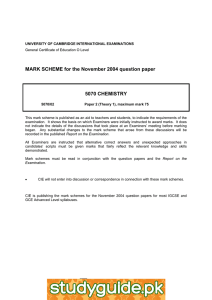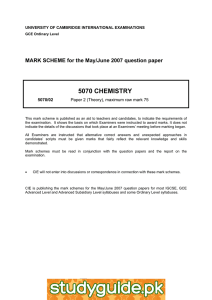GCSE chemistry audit on reactions of acids, atomic structure
advertisement
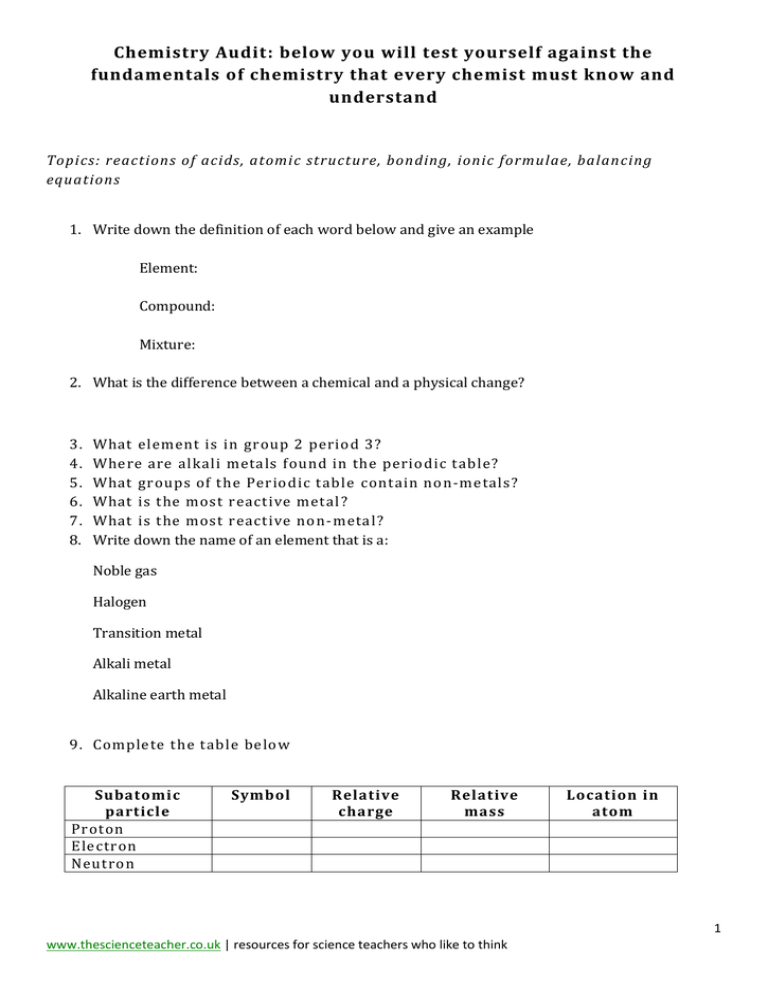
Chemistry Audit: below you will test yourself against the fundamentals of chemistry that every chemist must know and understand Topics: reactions of acids, atomic structure, bonding, ionic formulae, balancing equations 1. Write down the definition of each word below and give an example Element: Compound: Mixture: 2. What is the difference between a chemical and a physical change? 3. 4. 5. 6. 7. 8. What element is in group 2 period 3? Where are alkali metals found in the periodic table? What groups of the Periodic table contain non -metals? What is the most reactive metal ? What is the most reactive non -metal? Write down the name of an element that is a: Noble gas Halogen Transition metal Alkali metal Alkaline earth metal 9. Complete the table below Subatomic particle Proton Electron Neutron Symbol Relative charge Relative mass Location in atom 1 www.thescienceteacher.co.uk | resources for science teachers who like to think 10. How many protons, electrons and neutrons does this atom below have? 11. a. What does the term valence electrons mean? b. How many valence electrons does calcium have? c. How many valence electrons does astatine have? 12. 1. 2. 3. 4. 5. What is the electronic configuration of: Neon Calcium Ca 2 + F F- 13. How many atoms are in the following? d. H 2 O e. H 2 SO 4 f. CaCO 3 14. How many different elements are in the following? g. H 2 O h. H 2 SO 4 i. CaCO 3 15. What are the formula for the f ollowing ions (include charges)? Potassium Magnesium Boron Oxide Fluoride Carbonate Hydroxide Nitrate - 2 www.thescienceteacher.co.uk | resources for science teachers who like to think 16. Draw a dot and cross diagram for sodium. (2 marks) 17. Draw a dot and cross diagram for sodium b romide, showing outer electrons onl y. (4 marks) 18. NaBr has a high melting point, explain in terms of structure and bonding why this is? (3 marks) 19. Draw a dot and cross diagram for a chlorine molecule , showing only outer electrons. (2 marks) 20. Explain in terms of bonding and structure why chlorine is a gas at room temperature? (3 marks) 3 www.thescienceteacher.co.uk | resources for science teachers who like to think 21. Complete the following: acid + metal oxide ______________ + ____________________ acid + reactive metal ______________ + ___________________ acid + metal carbonate ________________ + _ _________________ + ____________ acid + base _______________ + __________________ 22. Complete a balanced symbol equation (with state symbols) for the following: a) hydrochloric acid + magnesium carbonate magnesium chloride + water + carbon dioxide b) magnesium + oxygen magnesium oxide c) chlorine + p otassium Iodide Iodine + Potassium chloride d) copper sulphate + iron iron (II) sulfate + copper e) copper(I) carbonate copper oxide + carbon dioxide f) sulphuric acid + zinc oxide copper chloride + water 4 www.thescienceteacher.co.uk | resources for science teachers who like to think

